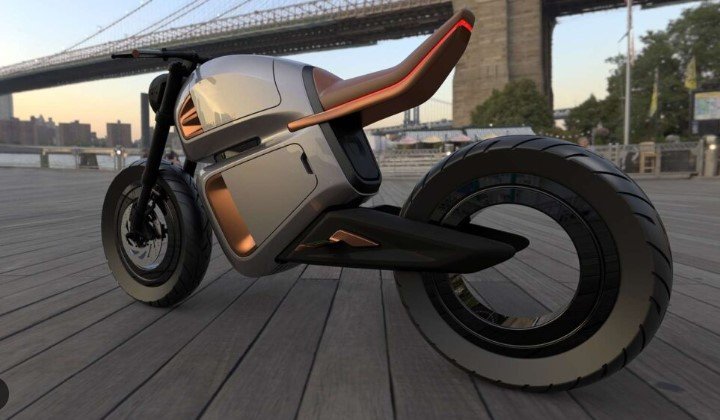The Evolution of Motorcycle Technology
The evolution of motorcycle technology has been nothing short of remarkable. From their humble beginnings in the late 19th century to the high-performance machines of today, motorcycles have undergone significant changes. Each advancement has improved performance, safety, and comfort, making riding more accessible and enjoyable. In this post, we’ll explore how motorcycle technology has evolved over time, highlighting key innovations that have shaped the industry.

The Early Days: The Birth of the Motorcycle
Motorcycle technology began in the late 1800s, with the invention of the first petrol-powered bike. The first real motorcycle, created by Gottlieb Daimler and Wilhelm Maybach in 1885, was essentially a bicycle with a small engine attached. This rudimentary design marked the beginning of what would eventually become a booming industry. Early motorcycles were simple in design, focusing on basic propulsion and frame stability. While these early models were far from comfortable or fast, they laid the foundation for the technological advancements that would follow.
Engine Technology: From Single-Cylinder to Multi-Cylinder Engines
As motorcycles gained popularity, the engines powering them saw significant improvements. Initially, single-cylinder engines dominated, providing just enough power for basic transportation. However, as riders sought higher speeds and more power, manufacturers began to experiment with multi-cylinder engines. The introduction of the V-twin engine in the early 20th century was a game-changer. This configuration provided more power and smoother operation, making motorcycles faster and more reliable. Over time, more engine designs emerged, including inline-four engines, which became popular in sportbikes for their high-revving capabilities and speed.
The technological improvements in engine design didn’t stop at the number of cylinders. Advances in fuel injection, turbocharging, and electronic fuel management systems have allowed modern motorcycles to deliver more power efficiently, with better fuel economy and cleaner emissions. These innovations have made motorcycles faster, more responsive, and more environmentally friendly.
Safety Features: Revolutionizing Rider Protection
Safety has always been a priority in motorcycle design, but advancements in technology have greatly enhanced rider protection over the years. Early motorcycles lacked safety features beyond basic brakes and simple headlights. However, as the years passed, the demand for safer riding experiences led to significant breakthroughs. The development of anti-lock braking systems (ABS) in the late 1980s was a major milestone. ABS prevents the wheels from locking up during hard braking, allowing riders to maintain better control, especially in slippery conditions.
Another significant advancement in safety was the introduction of traction control systems (TCS), which help prevent the rear wheel from losing traction on slippery surfaces. Combined with electronic stability control (ESC), these systems help ensure riders stay in control, even in adverse conditions. Additionally, modern motorcycles often come equipped with advanced lighting systems, including LED headlights and turn signals, which improve visibility, making riders more noticeable to other road users.
Comfort and Performance: The Role of Suspension and Electronics
Over the years, comfort and performance have become key focuses for motorcycle manufacturers. The introduction of advanced suspension systems has allowed motorcycles to handle rough roads and high speeds with ease. Early motorcycles featured basic suspension components, such as simple coil springs. As technology advanced, manufacturers incorporated more sophisticated systems, including telescopic forks, rear shocks, and adjustable suspensions, allowing riders to fine-tune their comfort.
In addition to suspension, electronics have played a growing role in improving performance and comfort. Modern motorcycles are equipped with ride modes that adjust power delivery, traction, and suspension settings depending on the rider’s preferences or the terrain. These ride modes, controlled by onboard computers, enable better handling and comfort, whether you’re navigating city streets or cruising on long highways. Advanced dashboards, GPS systems, and smartphone connectivity further enhance the riding experience, providing real-time information and navigation.
Conclusion
The evolution of motorcycle technology has brought about incredible changes, from the first steam-powered bikes to the advanced machines of today. Innovations in engine technology, safety features, comfort, and electronics have made motorcycles faster, safer, and more enjoyable to ride. As we look to the future, electric motorcycles and smart technology promise to revolutionize the industry even further. For both new and experienced riders, these advancements will continue to enhance the riding experience, ensuring that the thrill of motorcycling remains as exciting as ever.



